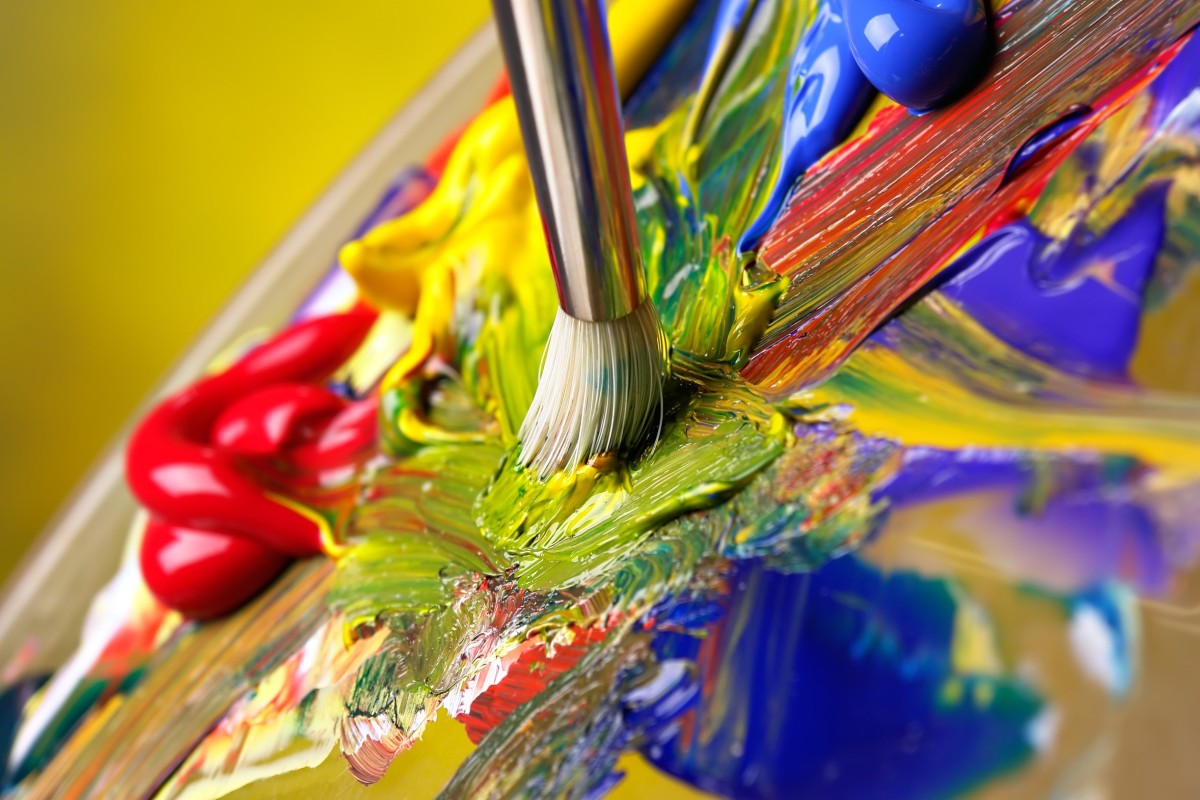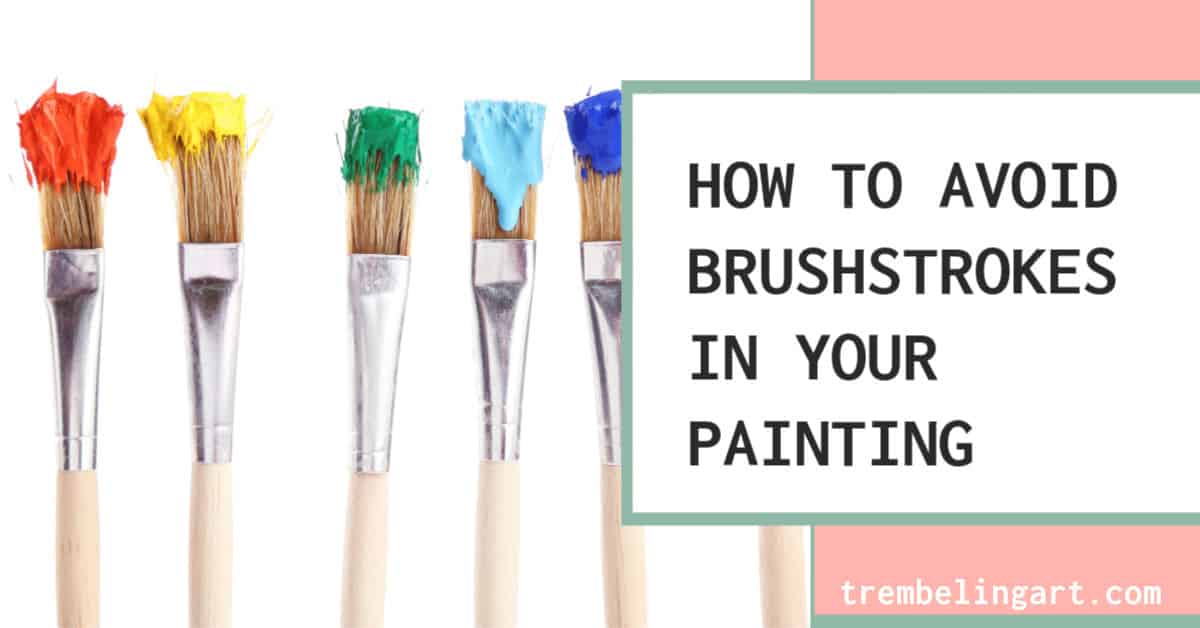| Classification | Brush |
|---|---|
| Uses | Painting |
- Best Professional Paint Brushes
- Brush Painting Technique
- Painting Car With Paint Brush
- Painting With Jane Paint Brushes
- Brush Painting With Tamiya Paint
- Painting Vinyl Seats With Paint Brush
- Painting With Paint Brushes
A paintbrush is a brush used to apply paint or sometimes ink. A paintbrush is usually made by clamping the bristles to a handle with a ferrule. They are available in various sizes, shapes, and materials. Thicker ones are used for filling in, and thinner ones are used for details. They may be subdivided into decorators' brushes used for painting and decorating and artists' brushes use for visual art.
Brush parts[edit]
- Bristles: Transfer paint onto the substrate surface
- Ferrule: Retains the bristles and attaches them to the handle
- Handle: The intended interface between the user and the tool
Trade painter's brushes[edit]
Nicpro 10 PCS Watercolor Paint Brushes, Round Tip Artist Painting Brush Set for Water Color, Acrylic Oil, Gouache, Ink, Detail, Rock, by Number Model Art Paintbrush. 4.6 out of 5 stars 572. Save 10% on 3 select item(s) Get it as soon as Fri, Apr 9.
- The kit comes with two large brushes for large surface painting and three smaller, narrower brushes for detailed work. Despite the differences, each brush has the same high level of build quality. The SRT filaments in the brush tips can hold more paint per dip than other competitors without increasing the size or weight of the brush.
- Then moisten the brush in water if you are about to use a water-based paint, or turps if you are about to use an oil-based paint. Make sure you remove excess liquid before painting. Fill the brush by dipping in up to half the length of the bristles. Tap it gently against the side of the can: don't wipe the brush.
- Excellent for cutting in at the ceiling or painting trim. Flat Sash - bristles are straight across and used primarily for applying paint over flat areas. Trim - a flat brush excellent for painting large flat surfaces, especially exterior siding. Wall - a thick flat brush that holds a larger amount of paint. Excellent for painting larger surface.
Brushes for use in non-artistic trade painting are geared to applying an even coat of paint to relatively large areas.
Following are the globally recognized handles of trade painter's brushes:
- Gourd Handle: Ergonomic design that reduces stress on the wrist and hand whilst painting.
- Short Handle: The shorter handle provides greater precision when painting small spaces such as corners, trims & detail areas.
- Flat Beavertail Handle: This shape is rounded and slightly flattened to fit perfectly into the palm of the hand whilst painting.
- Square Handle: Square shaped handle with bevelled corners is featured mainly in trim or sash brushes and is comfortable to hold when painting.
- Rat Tail Handle: This handle is longer & thinner than the standard making it easy to hold to give greater control.
- Long Handle: Rounded and thin, a long handle is easy to hold like a pencil giving great control & precision when cutting in & painting tricky spaces.[1]
Decorators' brushes[edit]
The sizes of brushes used for painting and decorating.
Decorators' brush sizes[edit]
Decorators' brush sizes are given in millimeters (mm) or inches (in), which refers to the width of the head. Common sizes are:
- Metric: 10 mm, 20 mm, 40 mm, 50 mm, 60 mm, 70 mm, 80 mm, 90 mm, 100 mm.
- Customary: 1⁄8 in,1⁄4 in, 3⁄8 in, 1⁄2 in, 5⁄8 in, 3⁄4 in, 7⁄8 in, 1 in, 11⁄4 in, 11⁄2 in, 2 in, 21⁄2 in, 3 in, 31⁄2 in, 4 in.
Decorators' brush shapes[edit]
- Angled: For painting edges, bristle length viewed from the wide face of the brush uniformly decrease from one end of the brush to the other
- Flat: For painting flat surfaces, bristle length viewed from the wide face of the brush does not change
- Tapered: Improves control, the bristle length viewed from the narrow face of the brush is longer in the center and tapers toward the edges
- Striker: Large round (cylindrical) brush for exterior painting difficult areas
Decorators' brush bristles[edit]
Bristles may be natural or synthetic. If the filaments are synthetic, they may be made of polyester, nylon or a blend of nylon and polyester.Filaments can be hollow or solid and can be tapered or untapered. Brushes with tapered filaments give a smoother finish.
Synthetic filaments last longer than natural bristles. Natural bristles are preferred for oil-based paints and varnishes, while synthetic brushes are better for water-based paints as the bristles do not expand when wetted.

A decorator judges the quality of a brush based on several factors: filament retention, paint pickup, steadiness of paint release, brush marks, drag and precision painting. A chiseled brush permits the painter to cut into tighter corners and paint more precisely.
Brush handles may be made of wood or plastic while ferrules are metal (usually nickel-plated steel).
Artists' brushes[edit]
Best Professional Paint Brushes
Short handled brushes are for watercolor or ink painting while the long handled brushes are for oil or acrylic paint.
Artist's brush shapes[edit]
The styles of brush tip seen most commonly are:
- Round: pointed tip, long closely arranged bristles for detail.
- Flat: for spreading paint quickly and evenly over a surface. They will have longer hairs than their Bright counterpart.
- Bright: shorter than flats. Flat brushes with short stiff bristles, good for driving paint into the weave of a canvas in thinner paint applications, as well as thicker painting styles like impasto work.
- Filbert: flat brushes with domed ends. They allow good coverage and the ability to perform some detail work.
- Fan: for blending broad areas of paint.
- Angle: like the filbert, these are versatile and can be applied in both general painting application as well as some detail work.
- Mop: a larger format brush with a rounded edge for broad soft paint application as well as for getting thinner glazes over existing drying layers of paint without damaging lower layers to protect the paintbrush
- Rigger: round brushes with longish hairs, traditionally used for painting the rigging in pictures of ships. They are useful for fine lines and are versatile for both oils and watercolors.
- Stippler and deer-foot stippler: short, stubby rounds
- Liner: elongated rounds
- Dagger looks like angle with longish hairs, used for one stroke painting like painting long leaves.
- Scripts: highly elongated rounds
- Egbert

Some other styles of brush include:
- Sumi: Similar in style to certain watercolor brushes, also with a generally thick wooden or metal handle and a broad soft hair brush that when wetted should form a fine tip. Also spelled Sumi-e (墨絵, Ink wash painting).
- Hake (刷毛): An Asian style of brush with a large broad wooden handle and an extremely fine soft hair used in counterpoint to traditional Sumi brushes for covering large areas. Often made of goat hair.
- Spotter: Round brushes with just a few short bristles. These brushes are commonly used in spotting photographic prints.
- Stencil: A round brush with a flat top used on stencils to ensure the bristles don't get underneath. Also used to create texture.
Artists' brush sizes[edit]
Artists' brushes are usually given numbered sizes, although there is no exact standard for their physical dimensions.
From smallest to largest, the sizes are:
- 20/0, 12/0, 10/0, 7/0, 6/0, 5/0, 4/0 (also written 0000), 000, 00, 0, 1, 2, 3, 4, 5, 6, 7, 8, 9, 10, 11, 12, 13, 14, 16, 18, 20, 22, 24, 25, 26, 28, 30. Brushes as fine as 30/0 are manufactured by major companies, but are not a common size.
Sizes 000 to 20 are most common.
Artists' brush bristles[edit]

Brush Painting Technique
Types include: Final cut download mac crack.
- watercolor brushes which are usually made of sable, synthetic sable or nylon;
- oil painting brushes which are usually made of sable or bristle;
- acrylic brushes which are almost entirely nylon or synthetic.
Turpentine or thinners used in oil painting can destroy some types of synthetic brushes. However, innovations in synthetic bristle technology have produced solvent resistant synthetic bristles suitable for use in all media. Natural hair, squirrel, badger or sable are used by watercolorists due to their superior ability to absorb and hold water.
Bristles may be natural—either soft hair or hog bristle—or synthetic.

- Soft hair brushes
- The best of these are made from kolinsky sable, other red sables, or miniver (Russian squirrel winter coat; tail) hair. Sabeline is ox hair dyed red to look like red sable and sometimes blended with it. Camel hair is a generic term for a cheaper and lower quality alternative, usually ox. It can be other species, or a blend of species, but never includes camel. Pony, goat, mongoose and badger are also used.
- Hog bristle
- Often called China bristle or Chungking bristle. This is stiffer and stronger than soft hair. It may be bleached or unbleached.
- Synthetic bristles
- These are made of special multi-diameter extruded nylon filament, Taklon or polyester. These are becoming ever more popular with the development of new water based paints.
Painting Car With Paint Brush
Artists' brush handles[edit]
Artists' brush handles are commonly wooden but can also be made of molded plastic. Mac address changer software, free download. Many mass-produced handles are made of unfinished raw wood; better quality handles are of seasoned hardwood. The wood is sealed and lacquered to give the handle a high-gloss, waterproof finish that reduces soiling and swelling.
Metal ferrules may be of aluminum, nickel, copper, or nickel-plated steel. Quill ferrules are also found: these give a different 'feel' to the brush, and are staple of French-style aquarel wash brushes.
References[edit]
- ^'Choose The Best Paint Brush | World's Finest Handcrafted Paint Brushes'. Monarch Painting | Australia's Finest Handcrafted Brushes, Rollers & Accessories. Retrieved 2019-02-24.
External links[edit]
| Wikimedia Commons has media related to paint brushes. |
| Look up paintbrush in Wiktionary, the free dictionary. |
Painting tired or out-of-place brick, whether inside or outside your home, is an inexpensive, fairly quick route to an updated—or just cleaner—look. Before you get started, however, expect to do some prep work.
Photo: shutterstock.com
There are a host of reasons that homeowners choose to paint brick:
• If a brick fireplace is out of sync with the decor of a room, it’s less expensive to paint it than it is to replace the brick with another material.
• A coat of light-color paint can alleviate the feeling of heaviness that a brick wall can impart.
• If a home’s brick exterior needs a makeover, painting it can give the property a fresh look, boosting curb appeal and perhaps even resale value.
Although any DIYer can paint brick, there are certain precautions and procedures to follow to ensure color success.
STEP 1: Clean and prep the brick.
Before painting brick, always clean it thoroughly so that your application of paint better adheres. Dirt and efflorescence should come off with soapy water and some diligent scrubbing with a stiff-bristled brush. Need something stronger? Try trisodium phosphate (TSP). A half cup of TSP mixed into a gallon of water ought to do the trick. (If you happen to own, or are willing to rent, a pressure washer, consider using one, especially if you need to clean a relatively large expanse of brickwork.)
Where you encounter mildew, apply a solution of one part bleach to three parts water. After letting it soak for half an hour, proceed to scrub the area with a wire brush. Never use acid cleaning solutions, any of which might compromise your paint job.
Note: If the brick has been installed recently, it’s essential to allow it plenty of time to dry and acclimate. Wait at least a year before painting it. If the installation has already been in place for decades, check the mortar for signs of damage and repair small cracks with acrylic caulk. With more pronounced issues, repointing the brick may be necessary. Whether or not you make any repairs, remember that brick must be completely dry for the paint to adhere successfully.
After cleaning, delay painting for a period of at least 24 hours.
STEP 2: Apply primer.
Depending on the area of the surface you wish to paint, use a brush or roller or paint sprayer to apply a coat of latex primer. Put additional coats on those sections that have been affected either by efflorescence or mildew. Whether you add one coat of primer or a few, let the primer dry completely before going any further.
Photo: shutterstock.com
STEP 3: Pick your paint.
Many favor the use of elastodynamic paint for brick. It features (as the term implies) a high level of elasticity, which makes it excellent for filling cracks as well as preventing them. Plus, elastodynamic paint performs well in all weather—not only precipitation but also high humidity.
If you cannot find or don’t wish to use elastodynamic paint, don’t hesitate to opt instead for regular acrylic latex exterior paint. In fact, for exterior brickwork, acrylic latex may be the superior choice, because it’s designed to stand up against mildew and to quickly evaporate any moisture that it absorbs.
STEP 4: Apply paint.
The easiest way to paint brick is with a paint sprayer. Weekend DIYers’ favorites are available from manufacturers such as Wagner, Tacklife, and HomeRight.
Painting With Jane Paint Brushes
If you are painting a relatively modest surface area—if you’re painting a brick fireplace surround, for example—brushes or rollers are sufficient. In fact, for those with no experience operating a sprayer, these low-tech painting tools are recommended. If you plan to use a roller, choose one with a thick nap to ensure best results on brick, which is riddled with nooks and crannies and surface irregularities.
For interior and exterior brick, many experts recommend semi-gloss or gloss paint, as either type accentuates detail and, compared with other paints, is easier to clean as time goes by.
Staining Brick
If the brick stands in decent condition, you have another finishing option: stain. Quicker and easier than painting, brick staining highlights the material’s unique texture, whereas painting does much the opposite.
Preparing brick for staining is no different from preparing it for painting. In either case, clean the surface thoroughly, allowing it to dry completely before moving forward. If you do not intend to stain the mortar, then seal it off with painter’s tape. (You can also use this trick if you decide to paint after all.)
Brush Painting With Tamiya Paint
If you decide to move forward with staining, be sure to test the stain on an inconspicuous part of the brick. Note that you can darken or lighten the tone by adding pigment or water, respectively.
Once you have a mixture that imparts a color you like, spread on the stain by moving the brush in a uniform direction. Alternatively, for a more even application, use a clean rag to wipe the stain onto the brick. Spread the stain as thinly possible, wait 24 hours, and then add a second coat. Along the way, remember to wear goggles and gloves.

Painting Vinyl Seats With Paint Brush
Painting With Paint Brushes
+
